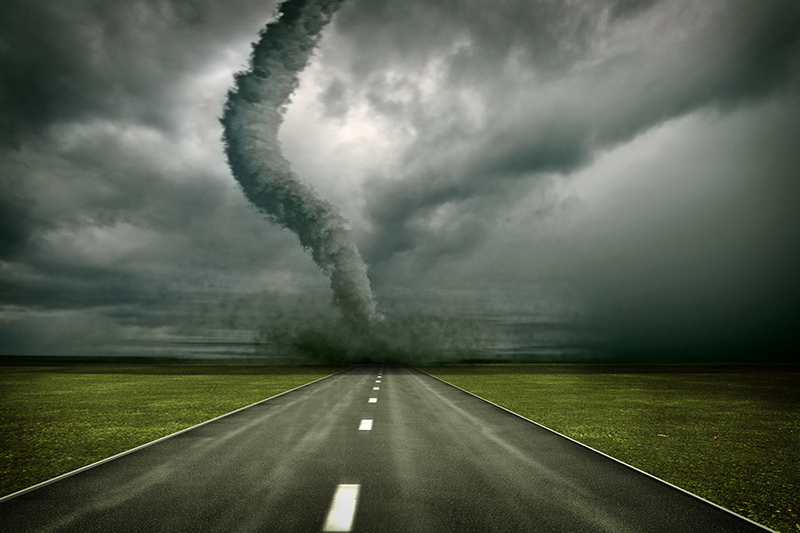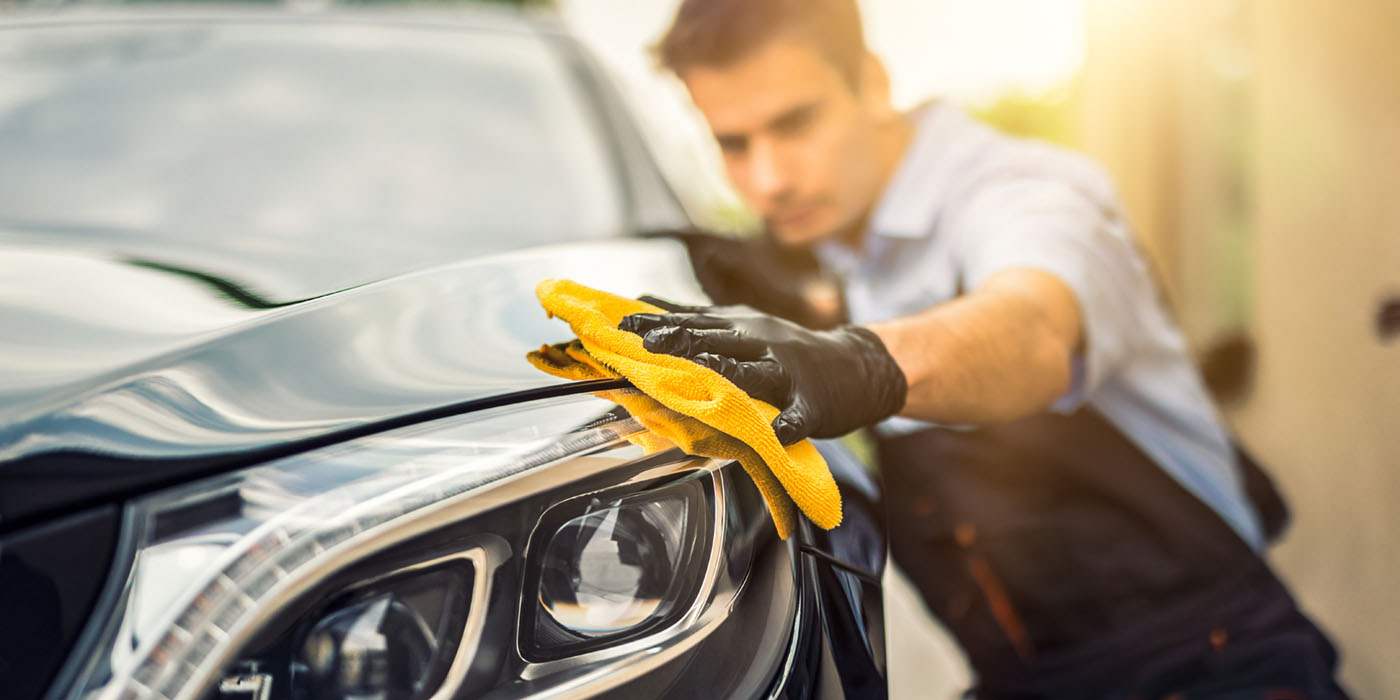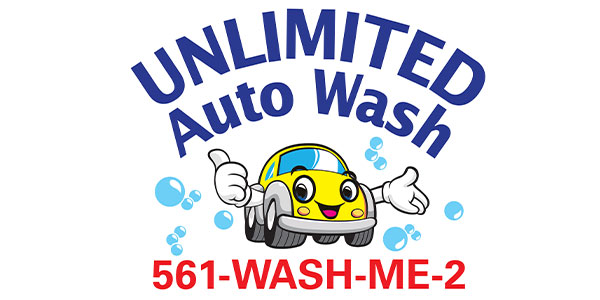Natural disasters devastate hundreds of businesses in the U.S. every single year. In fact, our agency sits in the center of Joplin, Missouri. A mile-wide tornado ripped through our community on May 22, 2011. That storm destroyed hundreds of homes, dozens of businesses and killed over 160 people. The rain-wrapped, wedge tornado reached EF5 strength (250-300 mph winds) and was the single costliest tornado in U.S. history, causing almost $3 billion in damages. Our insurance agency alone processed over $120 million in paid claims. There was no discrimination between carwashes, schools or hospitals; everything in its path was destroyed.
In 2016, insured losses due to natural disasters totaled $23.8 billion. Severe thunderstorms accounted for 60 percent of those losses.
I have no intention of wading into the climate change debate here; however, it must be mentioned that eight of the 10 costliest natural disasters in recorded history have occurred after the year 2000. Now that we know the scope of the risk, the obvious question is: How do I protect my wash operations? To answer that, we need to take a look at the three most common types of natural disasters: thunderstorms (wind/hail), floods and tornadoes/hurricanes.
What the hail?
If your carwash operation is in a part of the country that is particularly susceptible to thunderstorms, you should schedule a meeting with your property insurance agent to review your wash’s property insurance deductibles.
Property policies will generally cover losses from wind/hail damage; however, high-risk states often add a separate property deductible solely for wind/hail claims. Some insurance carriers have even issued endorsements excluding coverage altogether for wind/hail losses.
Most wash operations in Texas, Kansas, Nebraska, Oklahoma and South Dakota have already begun to see changes in their commercial property insurance coverage. Rates have increased significantly for buildings in high-risk areas, and/or many carriers are adding separate wind/hail deductibles to policies.
Insurance carriers rely on data to develop risk profiles for geographic areas, and ultimately that determines premium rates. From 2000 to 2015, more than $57 billion in hail losses were paid by insurance carriers. Most of those losses (70 percent) occurred during the past six years.
Because of this, if you own a carwash in a state where hail/wind storms are a regular occurrence, you can expect to see your insurance carrier taking action to mitigate its exposure to property claims. Insurance carriers have primarily chosen to do this through the use of separate property deductibles for wind/hail events.
The wind/hail deductible comes in one of two forms: a flat-stated dollar amount or a percentage deductible.
Here is how each works:
- Flat-stated deductible: Under this type of situation, if the deductible is stated as $500, that amount would simply be deducted from your total claim payout.
Example: Your insurance carrier approves your claim and has determined that you have an insured loss worth of $25,000. You would receive a claim check for $24,500. - Percentage deductible: This is the method many carriers are using to mitigate their risk. It is imperative that you understand completely how this works. The deductible is based upon a percentage of your building’s insured value (not a percentage of the claim).
Example: Your carwash (building) is insured for $500,000, and your insurance policy has a two percent wind/hail deductible. This means that $10,000 ($500,000 × two percent = $10,000) would be deducted from the amount you are reimbursed on a claim. In the event of the $25,000 insurance loss from above, you would be paid $15,000.
When the floodgates open …
Damage from flooding, including the rising water generated by a hurricane storm surge, is usually not covered under standard commercial insurance policies. This includes losses from overflowing rivers or streams, heavy or prolonged rain, storm surge, snow melt, blocked storm drains, broken dams and levees or other similar causes. To be considered a flood, waters must cover at least two acres or affect two properties. In 2015, the average flood claim amounted to more than $46,000, and the average policy premium was $700.
If your commercial property is located in a high-risk flood area and you have a mortgage from a federally regulated or insured lender, you are required to purchase flood insurance. Location is a key consideration in determining the need for flood insurance.
In order to determine your operation’s proximity to flood areas, simply go to FEMA’s Flood Map Service Center (msc.fema.gov/portal). It is also important to know that even if your operation is not required to purchase flood insurance, it may still be prudent to do so. In fact, one-third of all federal assistance for flooding is paid in areas that are located outside of flood zones.
Flood insurance covers damage to property and contents caused by a flood. Flood insurance is available from the federal government’s National Flood Insurance Program (NFIP). Flood insurance is only available from NFIP and very select private insurers. NFIP coverage may only be purchased through an insurance professional; you cannot buy it directly from the government.
To find a local insurance professional who is trained and familiar with the National Flood Insurance Program, contact NFIP at (888) 379-9531 for an agent referral.
Typically, there’s a 30-day waiting period from the date of purchase before your policy goes into effect. So, don’t wait until the water is rising to purchase coverage.
Commercial flood insurance provides up to $500,000 of coverage for your building and up to $500,000 for its contents. Additional coverage amounts are available by purchasing “excess insurance” amounts.
Don’t get blown away
When discussing such catastrophic events as tornadoes and hurricanes, the primary item of concern becomes accurate property values, as the risk of a major or total property loss is great. Please note that for either of these events, your claim may be affected by wind, hail or flooding endorsements within your policy. For example, if damage is determined to be the result of flooding, your claim would only be covered through a flood insurance program, as mentioned in the previous section.
Property is considered to be anything that has value and includes:
- Real property, which is land and the permanent things on it, such as buildings, outdoor fixtures, pay stations, permanently installed wash machinery and equipment.
- Business personal property, which is all other property that’s not classified as real property and can be easily moved, such as computers, telephones and office furniture.
Most insurance companies use two different methods for determining the value of property:
- Replacement cost, which refers to the amount to replace damaged or destroyed property with new buildings, equipment and furnishings.
- Actual cash value (ACV), which is the replacement cost of property, less the accumulated depreciation for age and wear.
When establishing the value of your wash’s real property, you might be inclined to insure it for the tax or market value. However, you might want to consider insuring it for the replacement value, because replacement costs have risen across most of the country even though market values have dropped.
Also, many business experts agree that insuring for replacement cost is better than insuring for actual cash value, even though it could be a bit more expensive. The initial savings you might realize from a lower premium — even over a 10-year period — would be a drop in the bucket in the event of a major loss and a costly rebuild to the wash’s original state.
While some insurers might allow you to insure for less than 100 percent of the replacement cost, it might not be the best idea. Depending on your policy and insurance company, you might have a co-insurance penalty clause. If so, you’ll have to pay a penalty if you under-report your insurance valuation or insure for less than 100 percent of replacement value.
One way to determine real property figures is to engage a local contractor and request an estimate for replacing the building. Most quality property insurance agents should be able to assist you in determining accurate replacement values based upon your wash characteristics (construction type, age, square footage, etc.).
Determining the value of your business personal property is much simpler. Think of it this way: If you turn your wash upside-down and shake it, everything that falls out would be considered business personal property. Take inventory of your stock and estimate the average value of it on any given week. If you have antiques, valuable artwork or other hard-to-replace items, have them appraised and include the total in your valuation.
If your wash operation is located on the top of a magical mountain and you do not have any of these worries, thank your lucky stars and move on. However, if you’re among the rest of us, take the time to locate an insurance professional that is well versed in these disasters and how they may affect wash operations.
Take the time to review your Commercial Property Policy closely, paying particular attention to your property values and deductibles. Ask your agent if your coverage package includes any deductible verbiage for wind/hail losses. If you do have wind/hail deductibles, ask your agent to offer you several deductible options, as it could make a significant difference in your total insurance premiums.
Lastly, if your current agent is not able to advise you about flood concerns and how it may affect your operations, contact the National Flood Insurance Program for an agent referral. Remember, there is a waiting period for this coverage, so plan accordingly. All in all, don’t wait until the storm is about to hit before making sure you’re properly covered.
Dan Tharp, CIC, RWCS is licensed in all states (except Alaska and Hawaii) and is the vice president of sales for The Insurancenter and the head of the Carwash Division. Tharp has been assisting business owners in protecting their operations, customers and employees for over 25 years. For questions regarding this article or any other insurance matters, reach Tharp at [email protected] or by calling (800) 444-8675.














